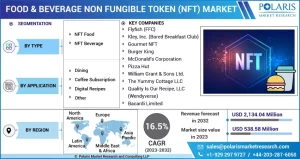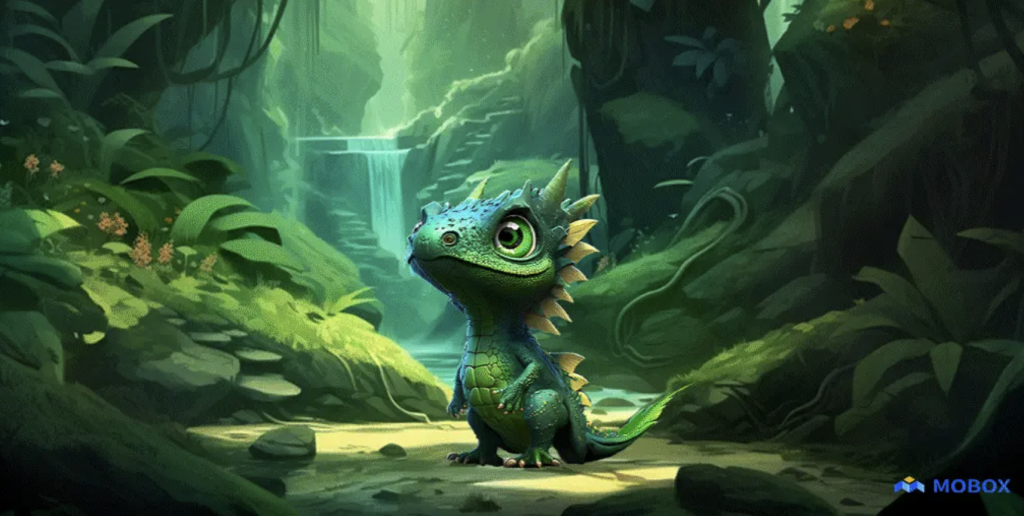NFT, AI and metaverse will continue to redefine art in 2023

In a year populated by many crises, little divided the art world in 2022 as much as its increasingly tumultuous relationship with technology.
On the one hand, while the entrance of artists like Takashi Murakami into the NFT arena has given the space some much-needed credibility, Christie’s reported a 96 percent drop in NFT sales over the year.
Although the medium remains subject to the same vulnerabilities as the crypto market, many creatives and platforms continue to explore ways to use the technology – with applications ranging from practical to abstract, and social to commercial.
:quality(70)/cloudfront-eu-central-1.images.arcpublishing.com/thenational/V2OVBJIS3TNQDUMVRO75ADSRCM.jpg)
Some will continue to question the legitimacy of NFTs as an artistic medium, as online marketplaces continue to be flooded with meme art tokens. Now that the hysteria has subsided, questions are being raised about the inherent “value” in NFT art, with conceptual works that can easily be imprinted over and over again, in contrast to physical works by modern artists.
Elsewhere, blockchain proponents continue to swear by the utopian ideal the technology underpins—whether as a means of verifying provenance and authenticity, or as a promised land of opportunity for emerging artists.
Others will simply wonder what the best application of the technology could be in the creative field. Much has been said about the democratizing power of NFTs, but their ability to truly empower creators and enrich communities has yet to be demonstrated at scale. How many emerging artists have bypassed the gatekeepers and risen to the top of the art world, scaling the ladder to NFTs?
The rise of AI
But if 2021 was the year of NFTs, 2022 was the year of artificial intelligence. Over the past 12 months, the rise and release of AI image generators, such as Dall-E and Midjourney, have provided unprecedented insight into just how powerful these algorithms have become.
There’s no more tangible way to explore the power of a modern AI system than by typing in “Arab man drinking coffee in the style of Van Gogh” and watching it draw a faithful depiction in under a minute.
The conversation bubbled to the surface in August, when Jason Allen won the Colorado State Fair award for a piece of digital art produced using the Midjourney system. He told The national that while critics of AI-generated work often aim to reduce the level of human input in the creative process, “you don’t just type in a few words and get amazing pieces.”
:quality(70):focal(2155x1106:2165x1116)/cloudfront-eu-central-1.images.arcpublishing.com/thenational/TDCGQ7JCABETLGLVUTW436X764.png)
He added: “There’s a process to it. One of my points is, if the question wasn’t a big deal, why does everyone keep asking me what it is?
“Instead of brushstrokes, there are keystrokes. I don’t know what the outcome will be, but I know what I feel and how I will express it. And then I discovered [it] at the end and it’s just faster than your process. So is that the problem? Are you afraid of the power?”
It is precisely this force that sends shock waves across the art and cultural spaces, and many wonder where to draw the line. At what point do we stop appreciating the space not only between the brush and the canvas, but the artist and the brush? When does the physical medium become redundant? And where does it all stop? As Murakami told us, the new question of our age is, “What is creativity?”
Automation has long been a problem across other sectors. As we move further into the fourth industrial revolution, the debate about the next waves of automation, especially in the creative spaces, may be led by AI art.
Other applications, such as the Lensa AI app, have meanwhile sparked wider debates – particularly over copyright issues, with artists claiming it creates avatars for users by compiling existing artwork.
:quality(70):focal(2423x822:2433x832)/cloudfront-eu-central-1.images.arcpublishing.com/thenational/64L7JKKIFJBODODAV7NJ4X4R44.jpg)
For algorithms trained to merge and replicate other people’s existing artwork, rather than reconfigure sources of inspiration as a human power, the process raises even more questions – how exactly does one draw the line between inspiration and duplication?
We can expect these conversations to escalate as AI technology continues to grow at an exponential rate and more systems, including perhaps Google’s own Imagen, are made more accessible to the public.
Some established artists will incorporate these systems into their work, others will shun and mock them. Smaller digital artists who work on commission will probably feel the pinch.
The Merit of the Metaverse
Earlier this year, The national also met Ai-Da, called “the world’s first ultra-realistic artist robot”. An AI-powered robot that uses a mechanical arm to paint, Ai-Da told us: “I believe that art can be a powerful tool for change. I try to use my artwork to encourage discussions about new technologies. It’s inspiring to see people discussing our features.”
Of course, in light of this, not all technological innovation in the arts will prove divisive. Virtual and augmented reality will continue to offer artists and audiences new ways to experiment and explore.
We’ve already covered projects, such as the Mosul Heritage Museum’s virtual reality exhibition, which uses technology to remarkable effect – allowing visitors to tour heritage sites destroyed by terrorists. We also examined how forensic architecture is used to solve human rights violations around the world.
However, the great metaverse continues to drag on its heels, leaving people wondering if the soil it plows will ever reap a worthy harvest. Do people really want to put on a set of VR goggles and look at an exhibition of Ringo Starr’s art in the metaverse?
:quality(70)/cloudfront-eu-central-1.images.arcpublishing.com/thenational/23GLG3PGWRBLBPYQBGE3TUEACU.JPG)
There are broader issues to explore: will Meta own the metaverse? Should anyone own the metaverse? And if they do, what does that mean for creativity? Will all digital art be filtered through the kind of socio-economic hierarchies the internet has always promised to counter?
If monopolies like Meta aim to enforce control over these digital spaces, perhaps we’ll see greater pushback from artists against the decentralizing powers of NFTs, lest their work be diluted by the links to algorithms designed to advance commercial interests . In this outcome, in a world where people’s attention is a product to be sold to advertisers, what role does art play, and what can creatives do to protect virtual cultural spaces?
Of course, the conversation is bound to shift, and with technology advancing at the rate it is, it’s impossible to truly predict how things will evolve. But one thing is certain: the marriage of art and technology is sure to remain a juggling act of promise and trouble for some time to come.
Browse photos of Takashi Murakami’s NFT project and the Dubai exhibition below
Updated: 1 January 2023 at 05.18

























